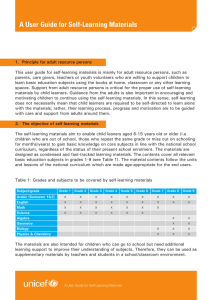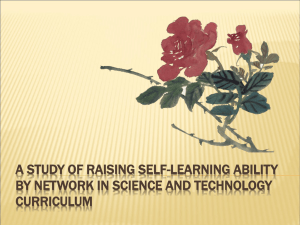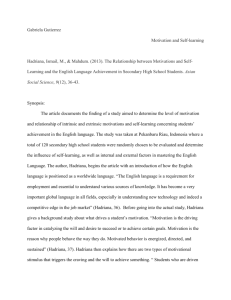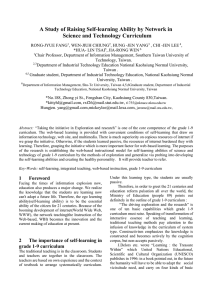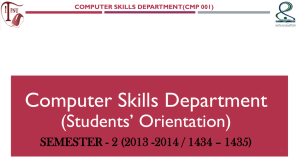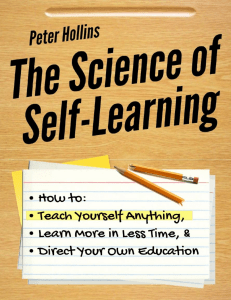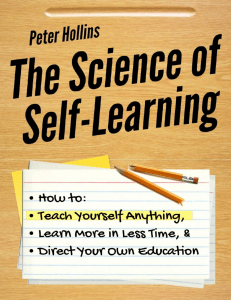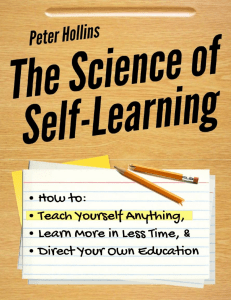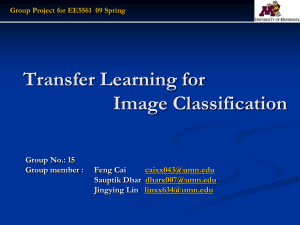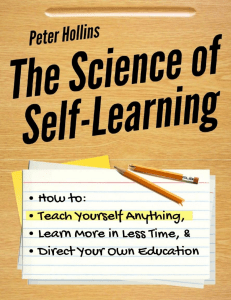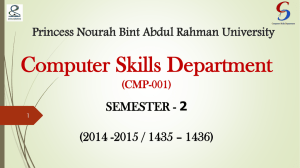3.2 Can the network learn all by itself?
advertisement
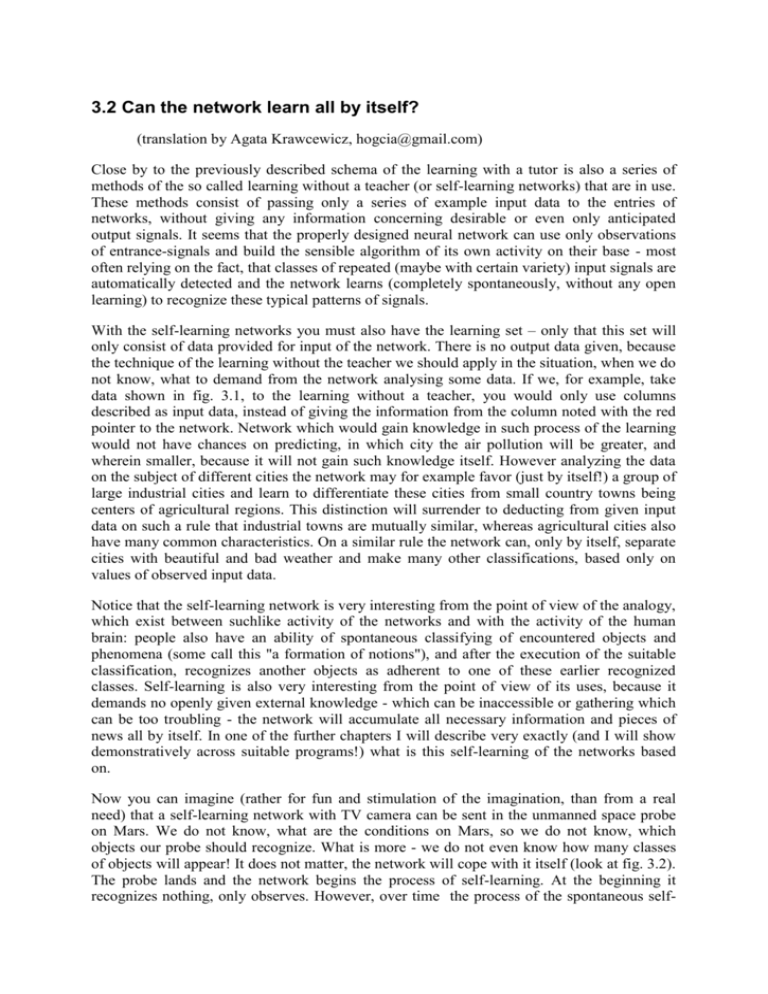
3.2 Can the network learn all by itself? (translation by Agata Krawcewicz, hogcia@gmail.com) Close by to the previously described schema of the learning with a tutor is also a series of methods of the so called learning without a teacher (or self-learning networks) that are in use. These methods consist of passing only a series of example input data to the entries of networks, without giving any information concerning desirable or even only anticipated output signals. It seems that the properly designed neural network can use only observations of entrance-signals and build the sensible algorithm of its own activity on their base - most often relying on the fact, that classes of repeated (maybe with certain variety) input signals are automatically detected and the network learns (completely spontaneously, without any open learning) to recognize these typical patterns of signals. With the self-learning networks you must also have the learning set – only that this set will only consist of data provided for input of the network. There is no output data given, because the technique of the learning without the teacher we should apply in the situation, when we do not know, what to demand from the network analysing some data. If we, for example, take data shown in fig. 3.1, to the learning without a teacher, you would only use columns described as input data, instead of giving the information from the column noted with the red pointer to the network. Network which would gain knowledge in such process of the learning would not have chances on predicting, in which city the air pollution will be greater, and wherein smaller, because it will not gain such knowledge itself. However analyzing the data on the subject of different cities the network may for example favor (just by itself!) a group of large industrial cities and learn to differentiate these cities from small country towns being centers of agricultural regions. This distinction will surrender to deducting from given input data on such a rule that industrial towns are mutually similar, whereas agricultural cities also have many common characteristics. On a similar rule the network can, only by itself, separate cities with beautiful and bad weather and make many other classifications, based only on values of observed input data. Notice that the self-learning network is very interesting from the point of view of the analogy, which exist between suchlike activity of the networks and with the activity of the human brain: people also have an ability of spontaneous classifying of encountered objects and phenomena (some call this "a formation of notions"), and after the execution of the suitable classification, recognizes another objects as adherent to one of these earlier recognized classes. Self-learning is also very interesting from the point of view of its uses, because it demands no openly given external knowledge - which can be inaccessible or gathering which can be too troubling - the network will accumulate all necessary information and pieces of news all by itself. In one of the further chapters I will describe very exactly (and I will show demonstratively across suitable programs!) what is this self-learning of the networks based on. Now you can imagine (rather for fun and stimulation of the imagination, than from a real need) that a self-learning network with TV camera can be sent in the unmanned space probe on Mars. We do not know, what are the conditions on Mars, so we do not know, which objects our probe should recognize. What is more - we do not even know how many classes of objects will appear! It does not matter, the network will cope with it itself (look at fig. 3.2). The probe lands and the network begins the process of self-learning. At the beginning it recognizes nothing, only observes. However, over time the process of the spontaneous self- organization will lead to a situation that the network will learn to detect and to differentiate between different types of input signals which appear on its entry: separately rocks and stones, separately plant forms (if they will be there), and separately living organisms. If we will give the network sufficient amount of time - it can be so educated that it can differentiate Martian-men from Martian-women - though her creator did not even know that they exist! Fig. 3.2. Fig. 3.2. Hypothetic planetary lander powered with self-learning neural network can discover not known forms of life (“alien”) on mysterious planets Of course earlier described self-learning Mars lander is exclusively a hypothetical creation, even though networks that form and recognize different patterns exist and are eagerly used. For example we could be interested in the fact of how many and which forms of the certain little known disease can in fact be found. Is this one sickness unit, or several? What are they differed by? How to cure them? It will be sufficient to take a self-learning neural network and show it the information on registered patients and their symptoms for a long enough period of time. Sometime later the network will give the information on how many typical groups of symptoms and signs will be detected and on the ground of which criteria one can differentiate patients classified to different groups. Explorer then only has to name these groups with properly wise sounding Latin names of illnesses - and he can already run to the tailor, to try on the tailcoat sewn for the solemnity of the handing of Nobel Prize! The described method of self-learning has of course (as everything on this world) definite defects - however, I will describe them a little later, when it will be already clear how all this works. Nevertheless, it has so many undeniable advantages, that one ought to be surprised with its comparatively small popularity!

